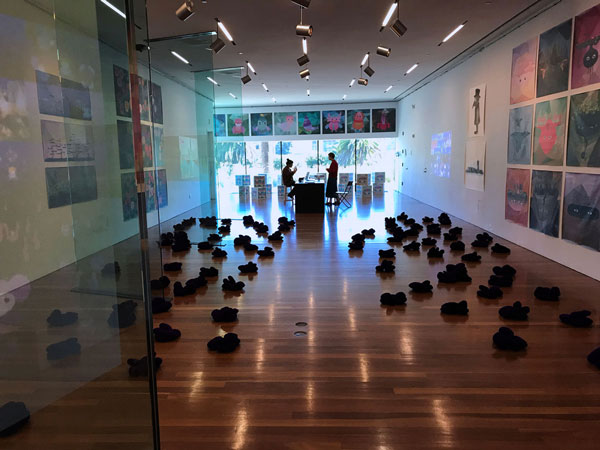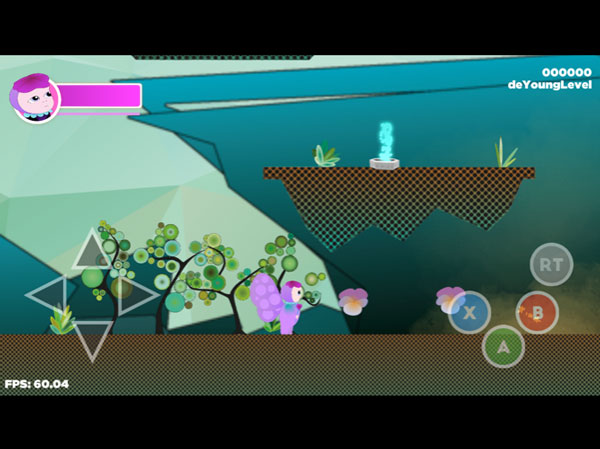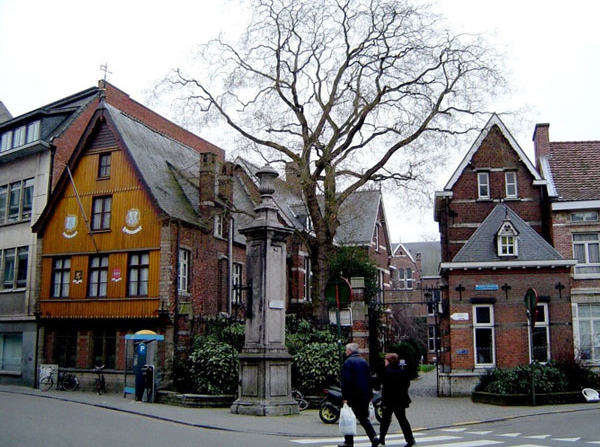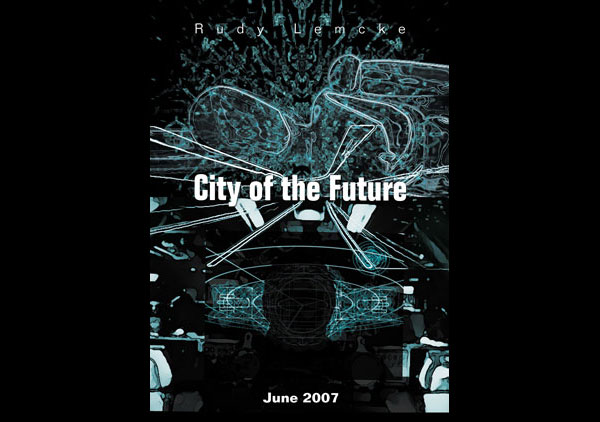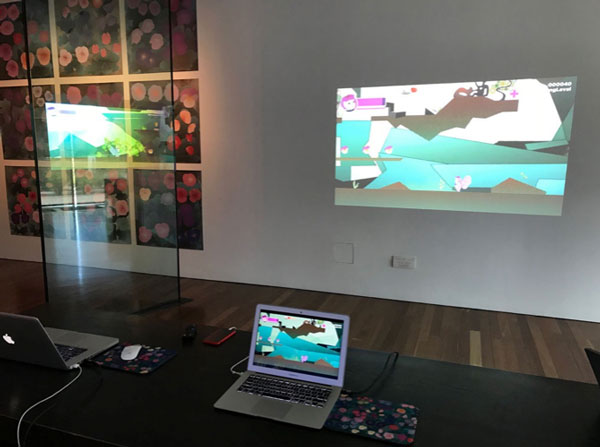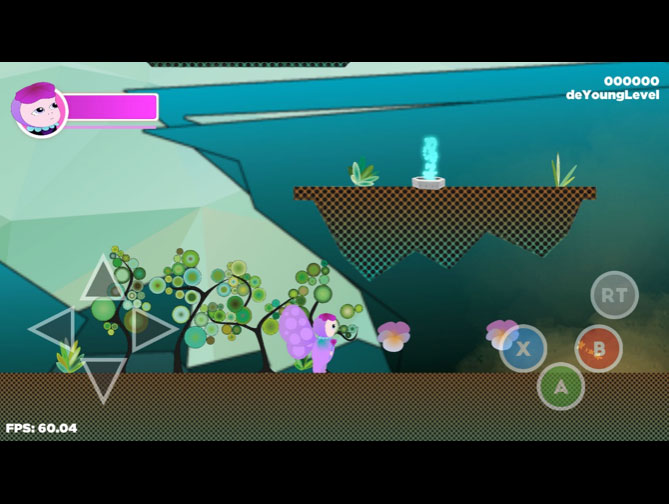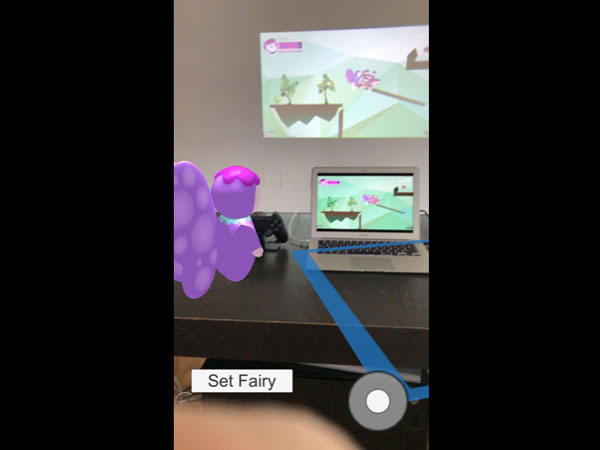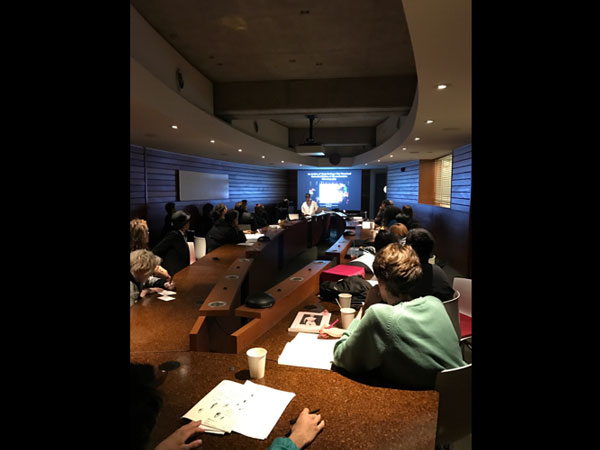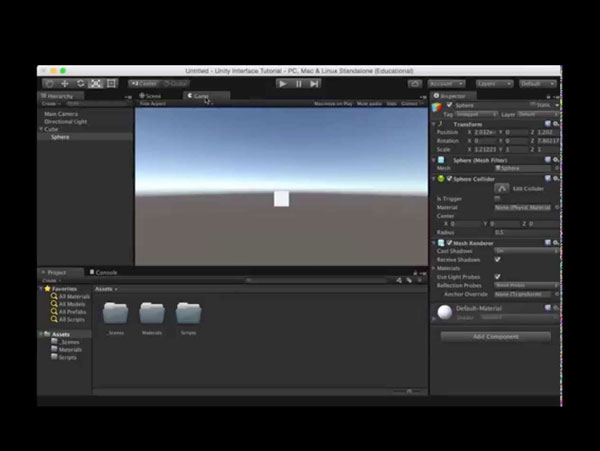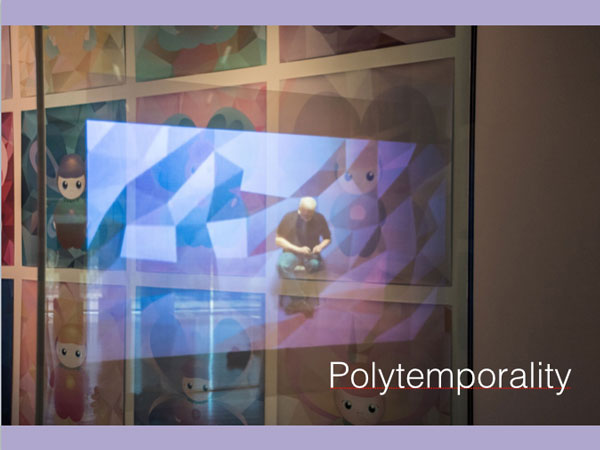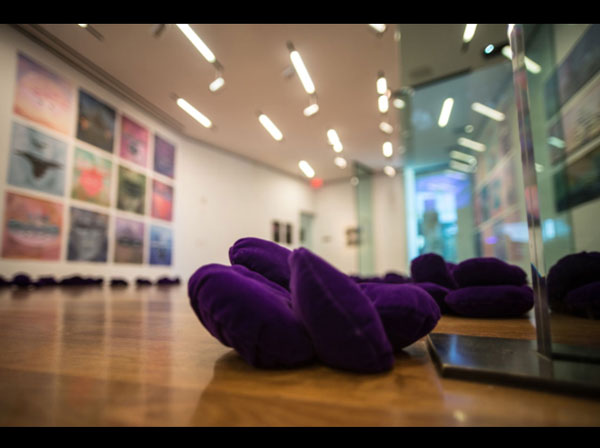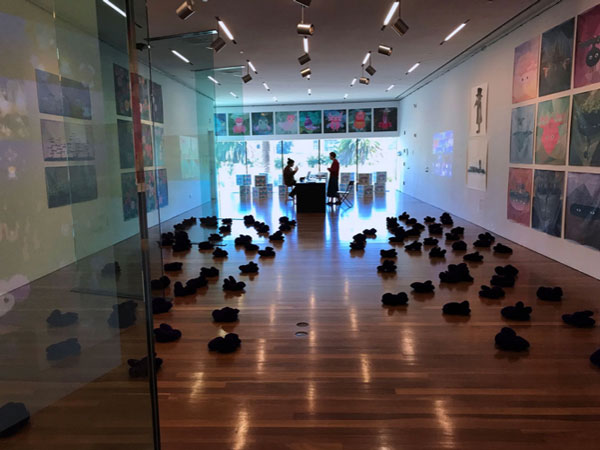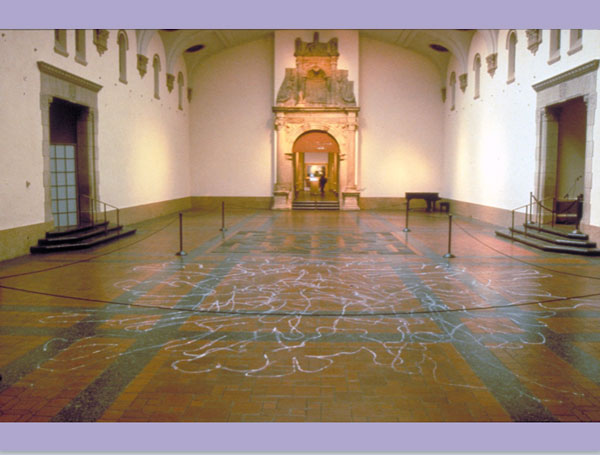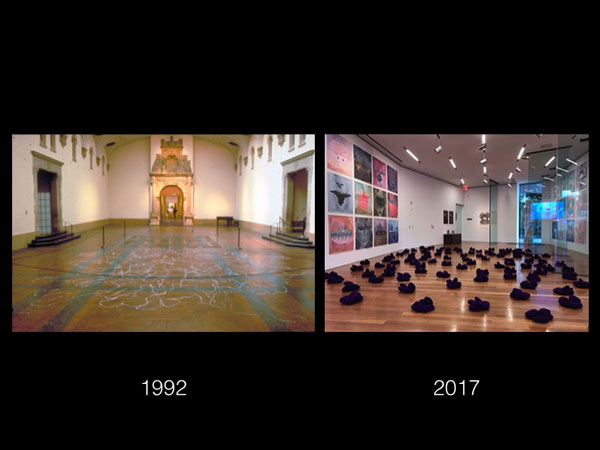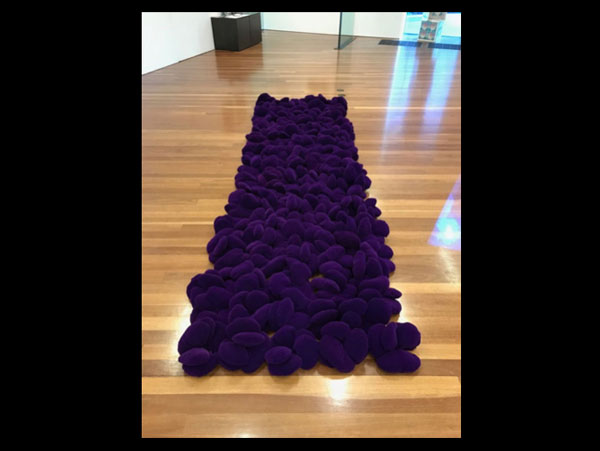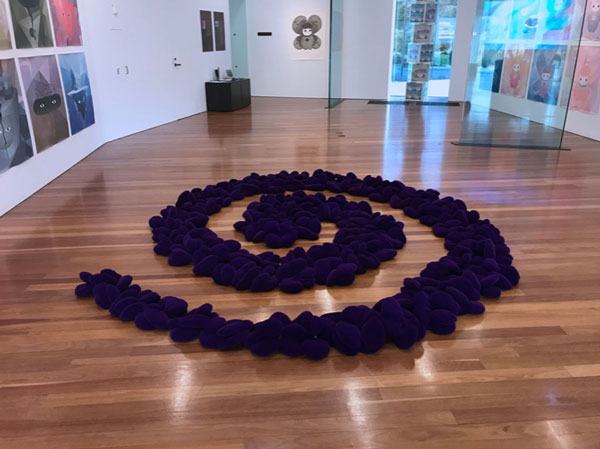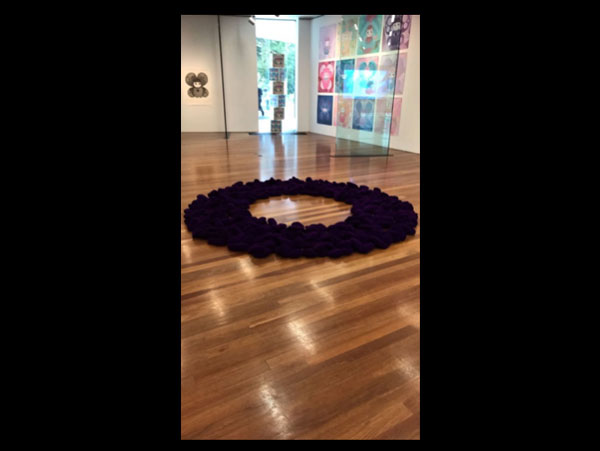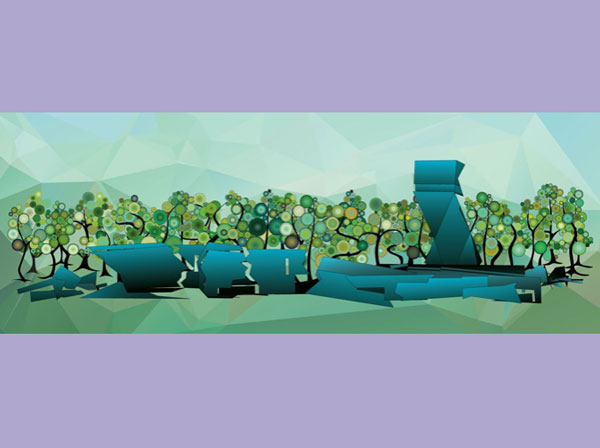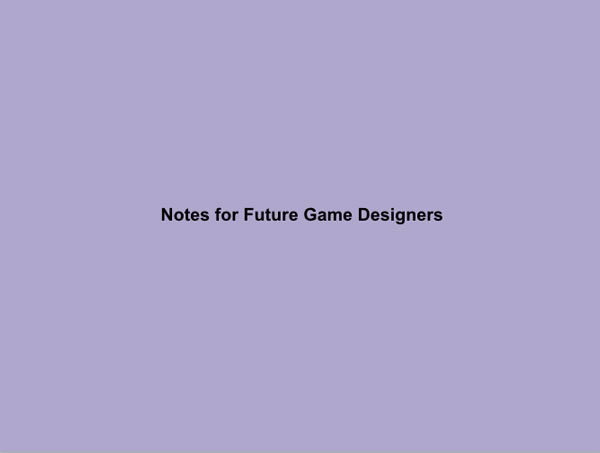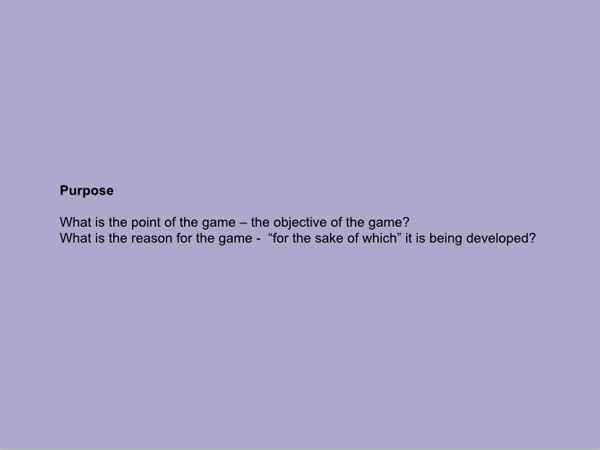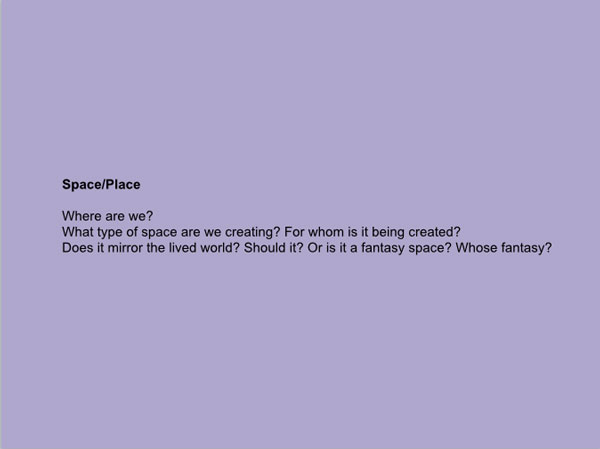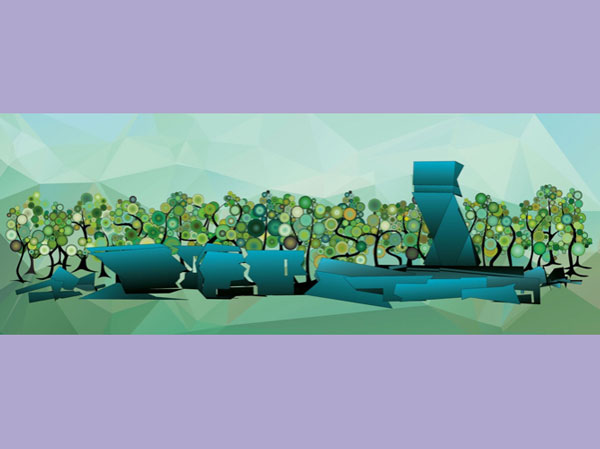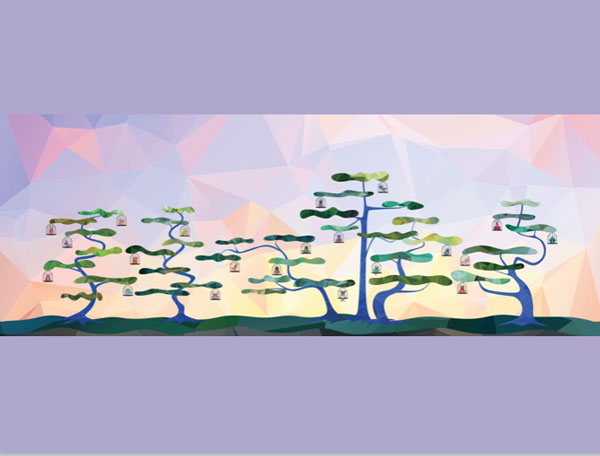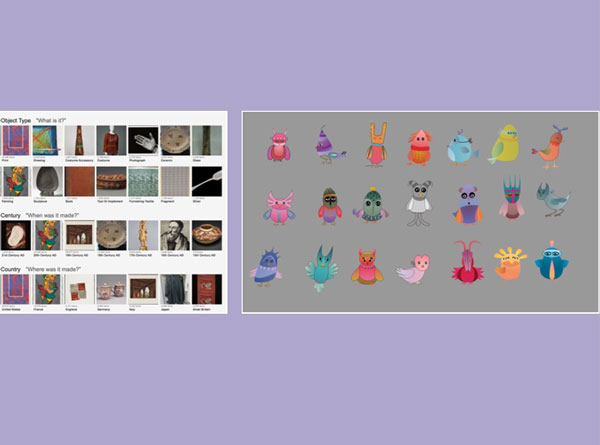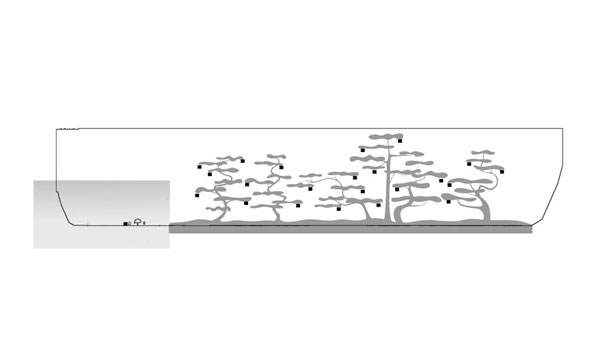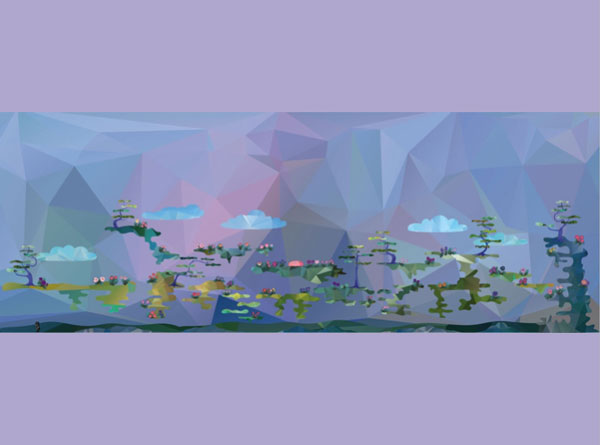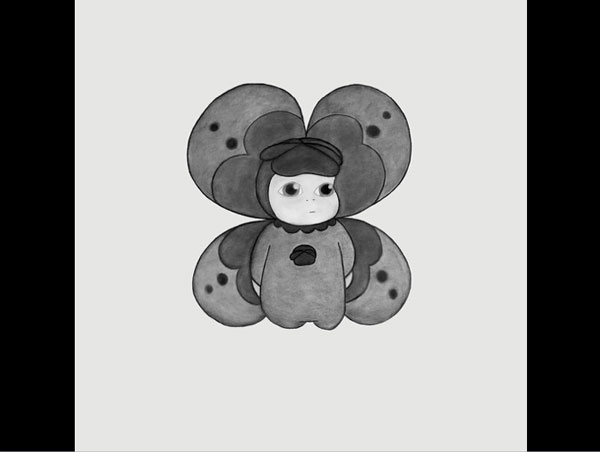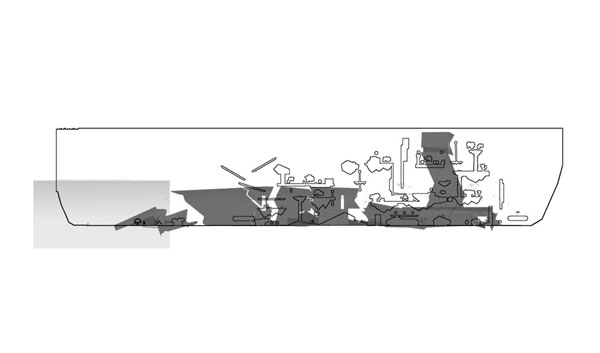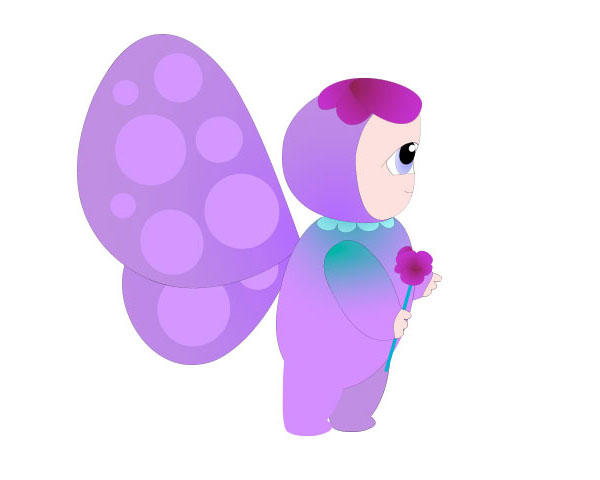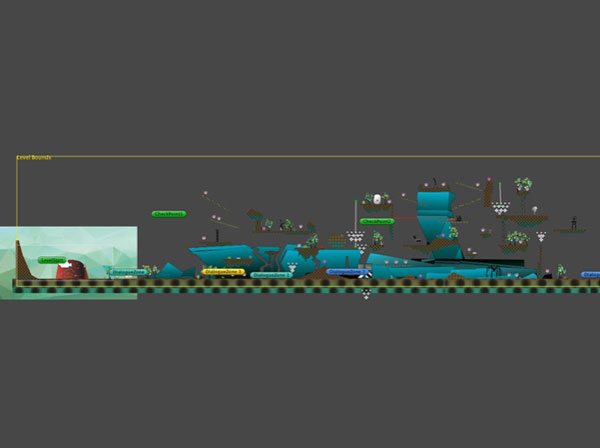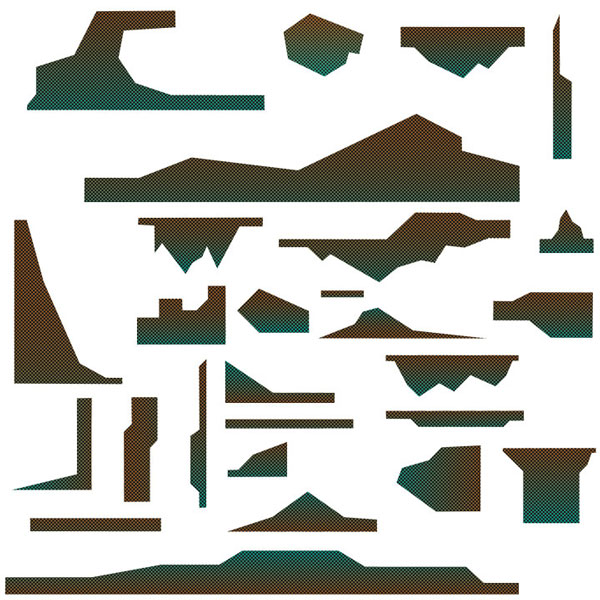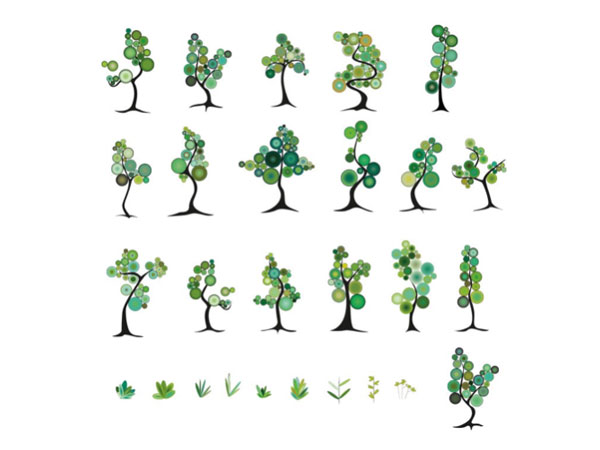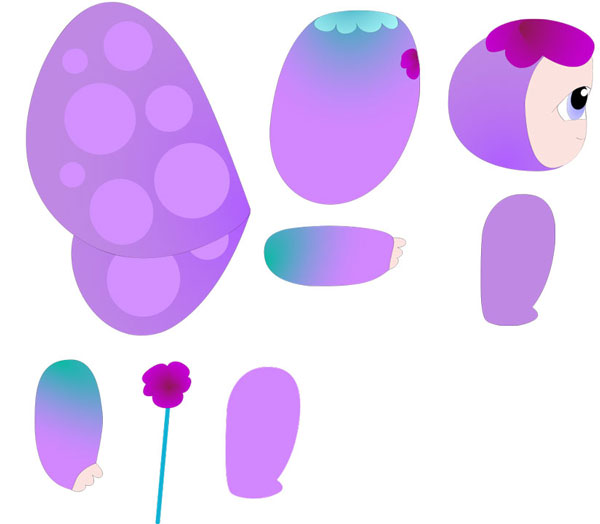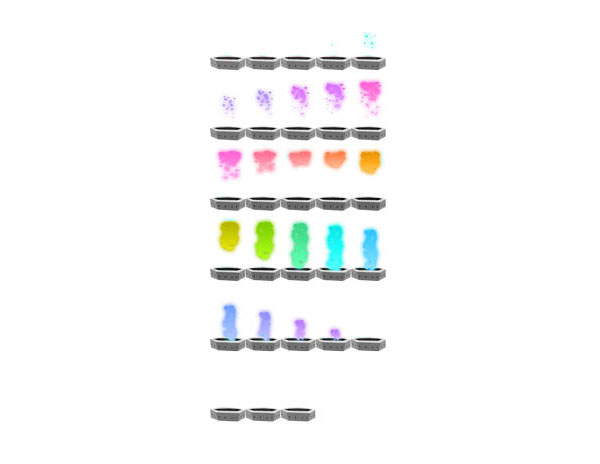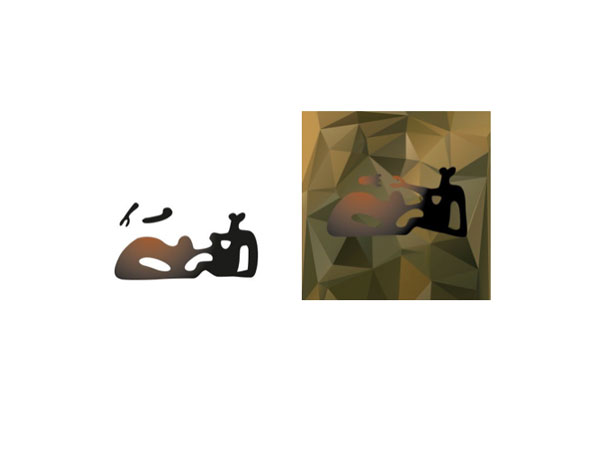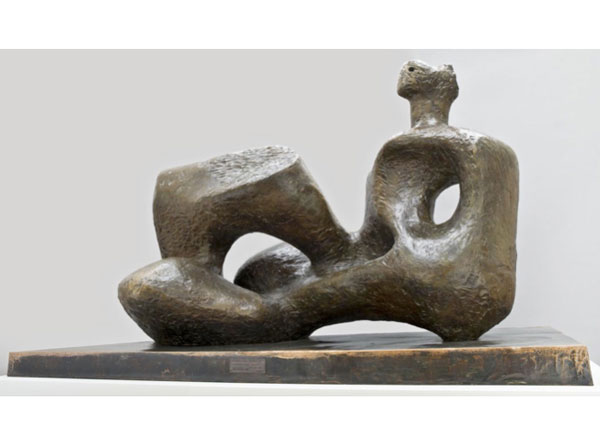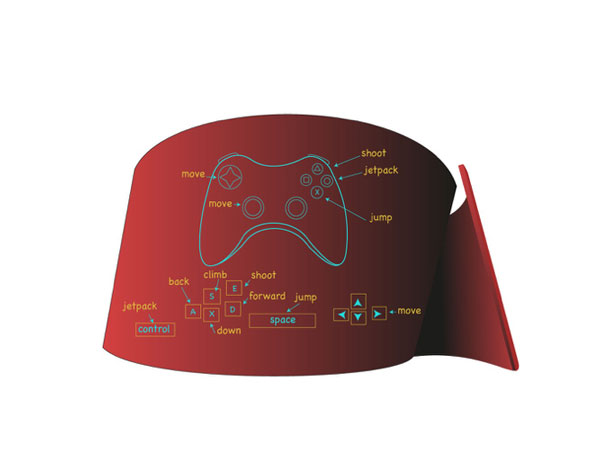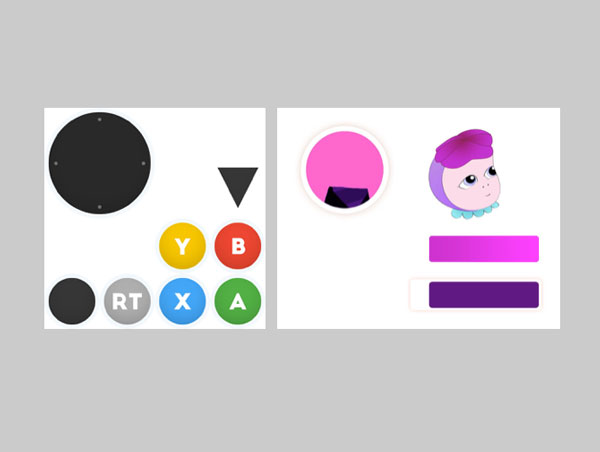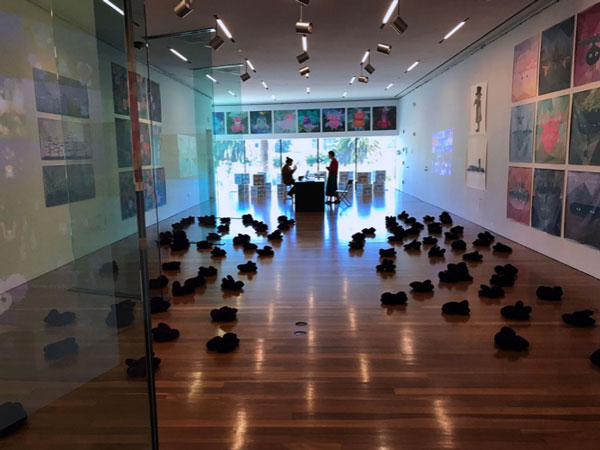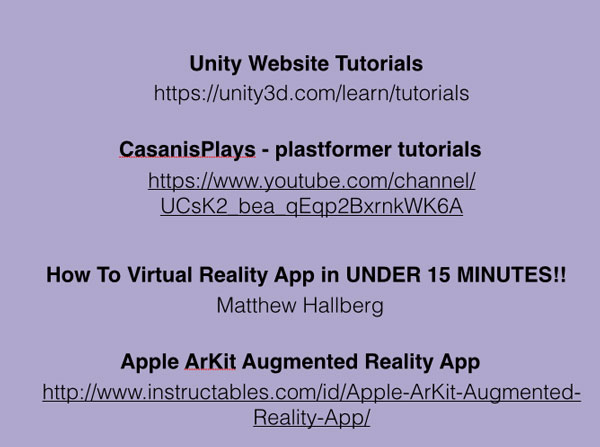These are the slides and presenter notes for the lecture at California State University East Bay: January 18, 2018.
The lecture was presented by the Forum at Cal. State and was geared to students in the new media department.
#1
#2
Tonight I’m going to talk about The New World installation and the 2D “platform” game, Pansy Farm that I developed for my artist’s residency last October at the de Young Museum in San Francisco.
#3
#4
#5
A screen grab from my IPhone of the Pansy Farm game.
#6
I’m going to start with a little bit about my background.
I didn’t go to art school and don’t have a degree in Fine Art. That makes me a self taught artist – an outsider artist. And even though I think this term is problematic, I actually like this designation because it’s precisely this outsiderness and the experience of the world from its margins that I am dealing with in my work.
#7
I do have a degree in Philosophy from the University of Louvain in Belgium. This is the Institute for Philosophy where I studied. This education more than anything else taught me how to think about being in the world.
#8
During the summers, I picked tobacco as a migrant worker in Ontario Canada to pay for my education. This experience taught me how to feel about being in the world.
#9
The extreme contrast between the part of me that was in a philosophical ivory tower and the other part of me that was living as an illegal farm worker each summer; set up a cognitive dissonance (where you hold but are unable to reconcile two conflicting ideas) and the feeling of moral stress that this causes – a conflict that I’m still trying to work out. Maybe this is what my art is all about: returning to this conflict over and over — and the tension between theory and the practice and politics of everyday life.
#10
A mapping of my art practice, moves in a curious way from the philosopher Michel Foucault and his important book, The Order of Things, to John Cage, to my early performance installations, AIDS, Political and Cultural Activism, Experimental Video, Augmented Reality, Video Games, Curatorial Projects, ESP and the work of Creative Labor. I’m not going to talk about my entire life’s work…but I’m going to try to navigate a certain narrative course through the work that shows the path to my current interest in game design.
#11
A quick philosophical detour. Michel Foucault was part of a movement called the post-structuralists. This was a movement that took hold in the late 60s and 70s and has resonance even how. The key takeaway for this movement was that it de-centered the idea of human subjectivity. That MAN in the cultural sense is not an essential being with preconditioned structures of knowledge. The post structuralists theorized that we are the product of our cultural conditioning, genetic make-up, and familial and social upbringing.
Foucault’s theories primarily address the relationship between power and knowledge, and how they are used as a form of social control through societal institutions. So the focus of Foucault and the post structuralists was an interest how in language, culture, and politics form the conditions in which we as Humans are known.
#12
On the artistic side of my interests in the mid-70s was the work of John Cage – composer and artist. This is the cover of this book Silence. His work challenged definitions about musicianship and musical experience. He was a student of Zen and was interested in the idea of change, and of the random, ephemeral qualities of experience. In his most famous piece called 4’33” he gave a concert where he sat silently at the piano for 4 and a half minutes, putting the focus of the work on the audience and the experience of listening rather than on the playing of a piece by a master pianist. The sounds in the audience – the audience’s restless movement, breathing and occasional coughs – became the music.
#13
It’s this idea of exploring the fields within which we are able to experience the world that I became interested in – the frames, the rules of the game within which we can play and know the world. My work foregrounds these fluid, shifting referential frames where the conditions of meaning and identities are made possible.
Screen grab from “Caress (after Roland Barthes)” 2001.
#14
This was my first attempt at video art. The text is partly taken from Roland Barthes’ book, A Lover’s Discourse. In the text, we are given fragments of ideas about love and loss and the experience of being in love and and out of love. It is written in a way that draws the reader into the text. I queered it up a bit by adding lines about same sex desire. We come to the awareness at some point in reading the text that we are the main character – the reader is the main character. I’m trying to get at this in the video. That each person will read the texts differently and in a different order – a different light – and that we are relating to the text in a very personal way and creating a unique experience. I’m trying to get the viewer to be self aware of his complicity and self involvement in the creation of the experience of art.
#15
This is another early piece called, The Uninvited (2003). It was originally created as an interactive non-linear Flash animation to be played on the computer. Each of the shadows were triggers that generated random lines from the underlying poem. I then reformatted the piece into a linear video projection a few years later. The video is projected onto a wall of a gallery space in a way that the viewer becomes one of the shadow. So the randomness that I built into the the Flash animation becomes a physical experience of being a part of the art work when presented as an installation.
#16
#17
This is a more recent video from 2016 called Un Coup de Dés (after Mallarmé). Mallarmé’s poem was written in 1895. It talks about existence and the poetics of Chance. That we are thrown into a field of language that is the world and no matter what we do we are always at the mercy of a random throw of the dice.
#12
#19
I’m going to loop back in time for just a minute. This is a performance score 1977.
#20
One of my performance installations from 1978 at the Contemporary Art Center in New Orleans. The viewer/ performer is meant to walk through the piece to experience it. To become a part of it.
#21
This is the notation/drawing/performance score for this piece.
#22
This is another performance installation at the Contemporary Arts Center. In all of this early work I used organic materials to build these temporary sculptures – like dirt, rocks, twigs, leaves – things I could easily pick up from the environment. The performance notations were very simple actions like breathing, turning one’s head, lifting one’s arms, etc. This piece was for walking and whistling. The little mounds of dirt were the musical notations for a song to be whistled as one walks through the piece.
#23
I moved from New Orleans to San Francisco. This was my first show and installation at Southern Exposure Gallery in 1980. It’s called Fantastic Garden – how I felt about being in the Bay Area!
#24
And this installation in 1981 called Private Garden.
#25
This is an example of my conceptual music scores that grew more elaborate during this peri0d.
#26
The work was all about experimenting with writing time based experiences and “spacializing” that system and performing within it. Of involving the viewer so that they become a part of the work.
At little lecture aside – I hope that you are seeing where this is going and that I’m setting the stage for the idea of game development.
#27
But before I get there, I just want to make one more detour. This time into the political sphere. During the 80s the AIDS epidemic exploded around the world and its epicenter was San Francisco. I did a lot of art about AIDS in those days and was very involved with AIDS activism. In a 2007 I did a retrospective exhibition of my work about AIDS and created a video called Where the Buffalo Roam as the center piece for the show. It video uses the music of Cage’s Perilous Night as both the sound track and the editing guide.
#28
#29
This is the interface for Adobe After Effect (circa 2007) and the screen comp I used to edit the film. My edits followed the score.
#30
#31
The film I’m going to show has 2 parts. I made this film from footage I took of an ACT UP demonstration at Market Street and Castro, San Francisco (around 1992). In the second part, when you see the hands playing the piano for the second time, the use of the Cage score and the editing becomes more pronounced.
#31
After my work about AIDS which spanned 10 years, I worked on other pieces that dealt with trauma among them were: City of the Future, The Origin of Light, The Search for Life in Distant Galaxies.
#32
City of the Future (after Tarkovsky’s Solaris), 2007.
This 11 part 2 channel video is about the tension between the concealed/disclosed nature of Language and our experience in the World; the need for contact with the Other and at the same time its incomprehensibility, and the confrontation with our understanding of Death. The video project reaches into Tarkovsky’s Solaris for answers.
(Reader – here is a link to my webpage about this piece. City of the Future (after Tarkovsky’s Solaris)
#33
Two of Eleven Videos from City of the Future (after Tarkovsky’s Solaris)
#34
The Origin Of Light was originally created as a CD-ROM in 2003.
An “Origin of Light” box contained the 10 text/poems on separate 4 x 4″ sheets paper and a disc of 10 short 1 minute videos.
I reformatted the piece for the web in 2010. (Reader: here is a link to the webpage for this project)
#35
The Search for Life in Distant Galaxies is a hybrid narrative that has been written and designed for the Internet. It is made up of 15 videos and text. It takes place in San Francisco’s Tenderloin district and tells the story of one man’s experience of the early days of the Gay Rights movement as it struggles for identity. It is a story of dislocation and the struggle for reintegration as the central character faces the gentrification of his home and neighborhood.
#36
Now we are getting a little closer to what your class is working on. Here is shot of Orpheus in the Rhododendron Dell (Golden Gate Park). My first AR piece from 2015. I used location detection to place these characters in Golden Gate Park.
#37
I eventually adapted this AR piece into a site specific AR piece for the Tenderloin National Forest in San Francisco later that year. The TNF is a small urban park in the heart of San Francisco’s Tenderloin. The triggers for the 13 part animation were targeted from the murals that surround the perimeter of the park. There were many complicated issues around this piece. The technology was new, it involved many steps for the viewer to get it working, the site was nearly always closed to the public, so I didn’t really think of it as successful.
I put so much work into the animation for the AR piece that I reformatted the work into two new projects: (Orpheus) The Poetics of Finitude and Fey Ontology. Both of these videos were shown as part of my artists residency project, The New World
#38
#39
#40
The characters and general look and feel of my project for the de Young is based on the work that I did for the Orpheus projects.
#41
Pansy Farm as it appears on my IPhone.
#42
I added an AR component to my installation at the de Young. The AR kit from Apple had just been released and I wanted to try it out, so I downloaded the SDK AR kit from apple and made this little fairy character move around in the installation space.
#43
#44
Some 3D prints of the main character of the game.
#45
Part of my practice involves curatorial projects. This is the “From Self to #Selfie” exhibition at SOMArts Cultural Center in June 2017.
I was trying to talk about the idea of the Selfie as a part of a complex queer cultural ecosystem – a queer public commons within which the self becomes re-presented and re-imagined in relation to a referential field of other screen selves.
#46
This image is from the “Queer Technologies” panel that I organized at California College of the Arts last year. It was part of a series called the Emerging Scholars Program – ESP – and is created to showcase young LGBT scholars. It’s a way of connecting their scholarship and research within the LGBT community.
#47
These words that I showed before, form the narrative that is my practice. I’m more interested in tugging at the frame of appearance, the conceptual and political field in which things exist more that the final formal object of art.
#48
I’m going to talk about my experience with Game Design and how I used Unity software to build my game – but I wanted to first show my early work and how this idea of interactivity (on many levels) has always been at play.
#49

For the de Young Museum residency, I wanted to play with the idea of the museum as something that wasn’t just a static building that housed a collection of static objects. I wanted to show the museum as a living organic space that houses memories like mine and the traces of lives and cultures. I wanted to show that the meaning of these things, these objects in the collection, are organic ideas that change and evolve as we evolve. The game space calls out to the viewer to become aware of this process. It is a game within a game.
#50
The idea (the concept for this work) is not just the 2D “platformer” Unity game. The game takes place within a museum and creates an environment that plays with this idea of the museum and the idea of making art inside of a museum. It’s a game within a game.
#51
Part of what’s going on in the installation is that it is playing with the notion of time and the idea of Polytemporality.
#52
In music “polytemporal” means that a composition has multiple time streams—polyrhythms, and tempos that are playing non sequentially.
#53
The installation is meant to prompt many different understandings and experiences of temporality – that is, of the relations between now and then, fast and slow, old and new, before and after.
#54
The installation consists of 40 prints that are studies for the characters and game levels, a field of 100 purple velvet pansies that are reconfigured every day, 2 game work stations, and 4 video projections.
The process of sewing the velvet pansies, the slow process of drawing the large charcoal pieces, is offset by the quickness of the digital printing process and the speed of game play.
#55
When I was working on the project I found myself in the flow of these different time modalities – I deliberately tried not to over-think anything but stayed within the moment of creating the different elements of the piece. But I came to an awareness of how much of what I was doing circled back to themes and ways of working that I had developed years earlier. For example, This is the completed installation from 1992 at the old de Young for A Day Without Art. It was my first experience of working at the de Young.
#56
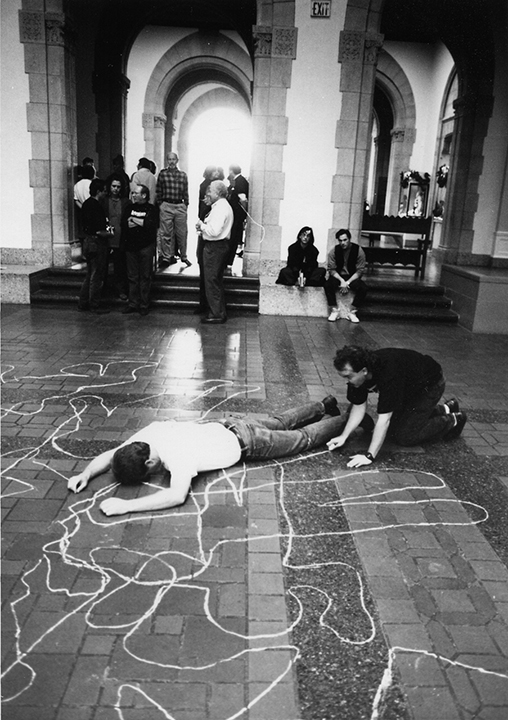
The piece was called Immemorial and was part performance art / part political action. For those of you too young to remember, activists would lay down in the middle of the street while others drew chalk outlines around their bodies as a visual representation of the lives lost to AIDS.
#57
#57
And the Pansy Field from 2017. There was definitely a continuity for me between the chalk outlines of bodies and the purple pansy field.
#58
The performance and reconfiguration of the field of purple velvet pansies and the traces of bodies from the World AIDS Day action were both symbolic acts of of remembrance—of memorializing the past. For the New World, the pansies represent a field of mourning and loss as well as rebirth and hope—its the “for the sake of which”—I was creating the game space. It points from the past to a new future, a new world.
#59
On a sculptural level, the Pansy Field is an unstable decentering of the art object that becomes the frame within which my work in the gallery is developed. It has no fixed form or center, and allows for multiple ways of seeing and interpreting the piece and sets the scene for the idea of free play of new game ideas.
#60
Each day of the exhibition I changed the configuration of the pansy field.
#61
Over the course of the 20 days of my residency I played around with some classic shapes like the spiral – a nod to Robert Smithson’s, Spiral Jetty.
#62
And and homage to Richard Long. I was having fun with Modernism.
#63
Pansy Field and within The New World.
#64
I’m going to stop the slide show here and demo the game. (Reader – there was a break in the lecture to do a live demonstration of the game.
#65
I’m going to outline some notes that I made when I was developing the game. These are a few things to consider…
The ideas come at you as fragments. Some are easily answered; some take time to flesh out.
#66
Purpose
What is the point of the game – the objective of the game?
What is the reason for the game – “for the sake of which” it is being developed?
#67
Space/Place
Where are we?
What type of space are we creating? For whom is it being created?
Does it mirror the lived world? Should it? Or is it a fantasy space? Whose fantasy?
#68
Rules and Methods
Is there a goal, or is it free play?
What are the rules of the game?
Are there obstacles? Are these obstacles seen as enemies or puzzles to be solved?
Do game objects have intelligence?
Are there rewards? Punishments?
What is the temporal feel of the game?
What are the aesthetics of this space? What is the look and feel of the game?
What is the end-game strategy? How do we exit the game?
#69
Characters/Players
Who is playing the game?
From what vantage point is the action experienced?
Is the player 3rd person or first person?
Is the player playing or watching the internal process of a fixed set of game rules?
Is the player playing or watching an internal process of an emergent experience?
How do we imagine and create a character?
Is the character first person, are they wearing a mask, using an avatar?
Is the character third person, viewed from a frame? What frame?
How do we animate a character? How does the character move?
What can the character do?
How do they interact with other characters, with other players, and with the environment?
Can the characters die?
#70
Levels/Environments
Is this a multi-level game? How do the levels differ?
How do we move between levels?
How do the different levels affect the character’s abilities?
What are the rules of engagement for each level?
Does the game have intelligence?
#71
An After Thought and Question for Future Game Designers
What is the meta-play of the game?
This understanding often comes after the game is in post-production or completed.
It is the awareness of an unforeseen dimension of the game that emerges from the process of creation and draws us forward into the world.
#72
Level One, the de Young World circles back upon itself in an endless loop of re-spawned characters. We participate in their eternal destruction and reappearance. We are caught in a time loop with this scene.
#73
Level Two takes place in the gallery at the Pansy Farm Work Stations where visitors develop characters and rules for new game-play.
#74
This level, level 2 is a collaborative game that I played with the visitors – an open game opportunity. The de Young collection website was projected on one of the walls and we made drawings and talked about the possible new characters and game play.
This was an open game opportunity for the visitors. These masks became the jumping off point for the development of new characters/avatars and a new game level that we developed during the residency.
#75
A sketch of the level design.
#76
Level Three, the Pansy World Level, represents the the possibility of future worlds. A utopian space. It is meant only as an idea – a conceptual level.
Level One was an actual video game, level Two was interaction with the game outside of the video and in collaboration with the museum visitors and level Three was completely conceptual as far as game play goes. It was meant as idea for game play in the future.
#77
So let’s talk about a playable 2D “Platformer” game.
This is the interface for the Pansy Farm Game in Unity.
The basic idea of the game is that the Player (the game) destroys Modern Art and paves the way for the Future – the Pansy Farm. It opens the possibility for a new way of thinking about art and museums.
#78
I started out with concept art. Here is the idea that I had for the collapsing de Young. The museum in ruins.
I usually start these with quick sketches but then work them up on a large scale like this one which is about 36″ x 44″.
#79
Here is the Fairy. The main character.
#80
I then did a rough sketch for the interaction design that I brought into illustrator to figure out the basic scale for everything and how the character would move through the scene. Obstacles, platforms, traps, power-ups.
#81
I then started working in illustrator to created the background for the game.
#82
And created the main character.
#83
Then I started in import the different assets into Unity.
#84
These are the platforms.
#85
Trees
#86
For the animations, I separated the different layers of the character and imported the cut up pieces into unity as one jpeg. Using the different parts of the character to create a puppet like object, I then animated the character’s different moves, like Idle, walk, run, jump, fly, etc.
#87
I also created animated props like this fountain. The animation is created in illustrator on different layers then imported as a one sprite sheet. The sheet is broken up in Unity as separate images and made into a sequential animation loop. This is more like classic Disney animation.
#85
I created “enemies” that are AI (intelligent) characters that are triggered by the proximity of the player. This one based on a sculpture by Henry Moore shoot bombs at the Fairy/Player as he approaches.
#86
The Henry Moore I used as a reference for that character.
#87
This game prop is seen at the opening of the game and tells the user how to navigate the scene. It’s based on a sculpture by Richard Serra.
#88
The Richard Serra at SF MOMA.
#89
Since I didn’t work with a team, I went back and forth from sketching to illustrator to Unity, and creating the platforms and different elements like the trees, the fountains the pansy token and game props.
I imported the background and the static elements first. This required no coding. Then I built out the characters and animation and added the C# code.
#90
The last thing is to create the GUI the Graphical User Interface. Navigation buttons and the scoreboard interface and add the code that enables the user to use a game controller.
#91
I then worked out all of the coding for the game. This is one of the most time consuming parts of producing an indie game – a part that I am not going to tackle in this talk. But suffice it to say that it is one of the main pillars of game design.
The final task is to export the game to x-code – Apple software that translates Unity game engine to code that can be uploaded to iPhone or iPad. This is how the game appears on my iPhone.
#92
And the final output on the computer projected on site.
#93
#94
A neon piece in the window of the exhibition. The future. This piece was originally part of the City of the Future (After Tarkovsky’s Solaris) installation. It is meant to be somewhat enigmatic. Are we moving toward a future? or are we in a game loop that recreates the scene of cultural trauma?
#95
These are the tutorials that I used to learn Unity. I hope they are useful to students.
Thank you and good night.


